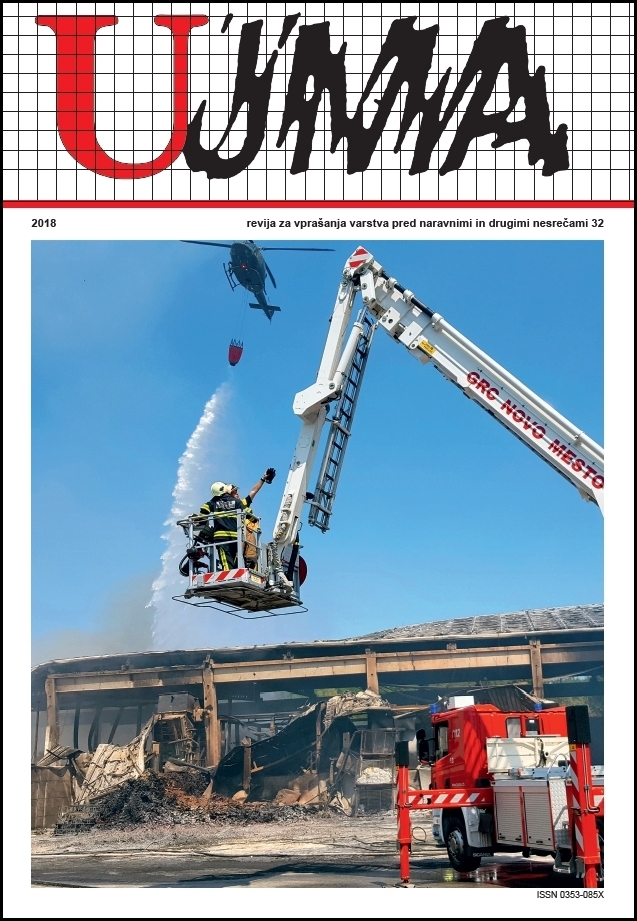EARTHQUAKE EARLY WARNING
Abstract
Earthquake early warning systems are based on information on the occurrence of a strong earthquake, detected by seismic stations close to the epicentre, being used to alert citizens further away from the epicentre before damaging seismic waves reach their location. Each system is composed of a dense network of seismic stations, fast data transmission, fast automatic determination of the earthquake’s parameters, attenuation models of the decrease of shaking intensity with distance, and the effective distribution of alerts, since only a few seconds to a few tens of seconds are available for action. Due to the rapid development of communication channels for data transmission and alerts, earthquake early warning systems have been in development in most countries at high risk of earthquakes. We tested the PRESTo early warning system in the wider Slovenia region, in cooperation with neighbouring countries. Tsunami warning systems are based on similar principles, but the time available for the action is longer, since several hours may pass between the occurrence of the earthquake and the strike of damaging ocean waves.
References
Allen, R., 2013. Seismic hazards, seconds count. Nature, 3 October 2013, vol. 502, 29–31.
Burkett, E. R., Given, D. D., Jones, L. M., 2017. ShakeAlert – An earthquake early warning system for the United States west coast. USGS Fact Sheet 2014–2083, 4 str., https://pubs.er.usgs.gov/publication/fs20143083.
Doyle, H., 1995. Seismology. Wiley, 218 str., Chichester.
Festa, G., Picozzi, M., Caruso, A., Colombelli, S., Cattaneo, M., Chiaraluce, L., Elia, L., Martino, C., Marzorati, S., Supino, M., Zollo, A., 2017. Performance of earthquake early warning systems during the 2016–2017 Mw 5–6.5 Central Italy sequence. Seismological Research Letters, 89/1, 1–12.
Fujinawa, Y., Noda, Y., 2013. Japan’s earthquake early warning system on 11 March 2011– performance, shortcomings, and changes. Earthquake Spectra, 29/1, 341–368.
Gosar, A., 2011. Predhodniki (znanilci) potresov – pregled opazovanj in pojasnjevalnih modelov. Ujma, 25, 178–185.
Gosar, A., 2012. Veliki tohokski potres na Japonskem 11. marca 2011. Ujma, 26, 86–91.
Gosar, A., 2013. Obsodba znanstvenikov po rušilnem potresu v L'Aquili. Ujma, 27, 303–308.
Gosar, A., 2015. Deset let od cunamija v Indijskem oceanu – po številu žrtev druga največja potresna katastrofa v zgodovini. Ujma, 29, 312–317.
Minson, S. E., Meier, M., Baltay, A. S., Hanks,T. C., Cochran, E. S., 2018. The limits of earthquake early warning: Timeliness of ground motion estimates. Science Advances, 4: eaaq0504.
Mussett, A. E., Khan, M. A., 2000. Looking into the Earth, an intoduction to geological geophysics. Cambridge university press, 470 str., Cambridge.
Picozzi, M., Elia, L., Pesaresi, D., Zollo, A., Mucciarelli, M., Gosar, A., Lenhardt, W. A., Živčić, M., 2015. Trans-national earthquake early warning (EEW) in north–eastern Italy, Slovenia and Austria: first experience with PRESTo at the CE3RN network. Advances in Geosciences, 40, 51–61.
Pesaresi, D., Picozzi, M., Živčić, M., Lenhardt, W. A., Mucciarelli, M., Elia, L., Zollo, A., Gosar, A., 2017. A crossborder regional earthquake early warning system: PRESTo@CE3RN. Natural Hazards, 86, 431–440.
Satriano C., Elia L., Martino C., Lancieri M., Zollo A., Iannaccone G., 2011. PRESTo, the earthquake early warning system for Southern Italy: concepts, capabilities and future perspectives. Soil Dyn Earthq Eng, 31, 137–153.
Wikipedia, 2018a: Earthquake warning system. https://en.wikipedia.org/wiki/Earthquake_warning_system.
Wikipedia, 2018b: Earthquake Early Warning (Japan). https://en.wikipedia.org/wiki/Earthquake_Early_Warning_(Japan).
Wikipedia, 2018c: 1994 Northridge earthquake. https://en.wikipedia.org/wiki/1994_Northridge_earthquake
Wikipedia, 2018d: Tsunami. https://en.wikipedia.org/wiki/Tsunami
Downloads
Published
Issue
Section
License

This work is licensed under a Creative Commons Attribution-NonCommercial-NoDerivatives 4.0 International License.
The articles are made available to the public under Creative Commons Attribution-NonCommercial-NoDerivatives 4.0 International (CC BY-NC-ND 4.0).


